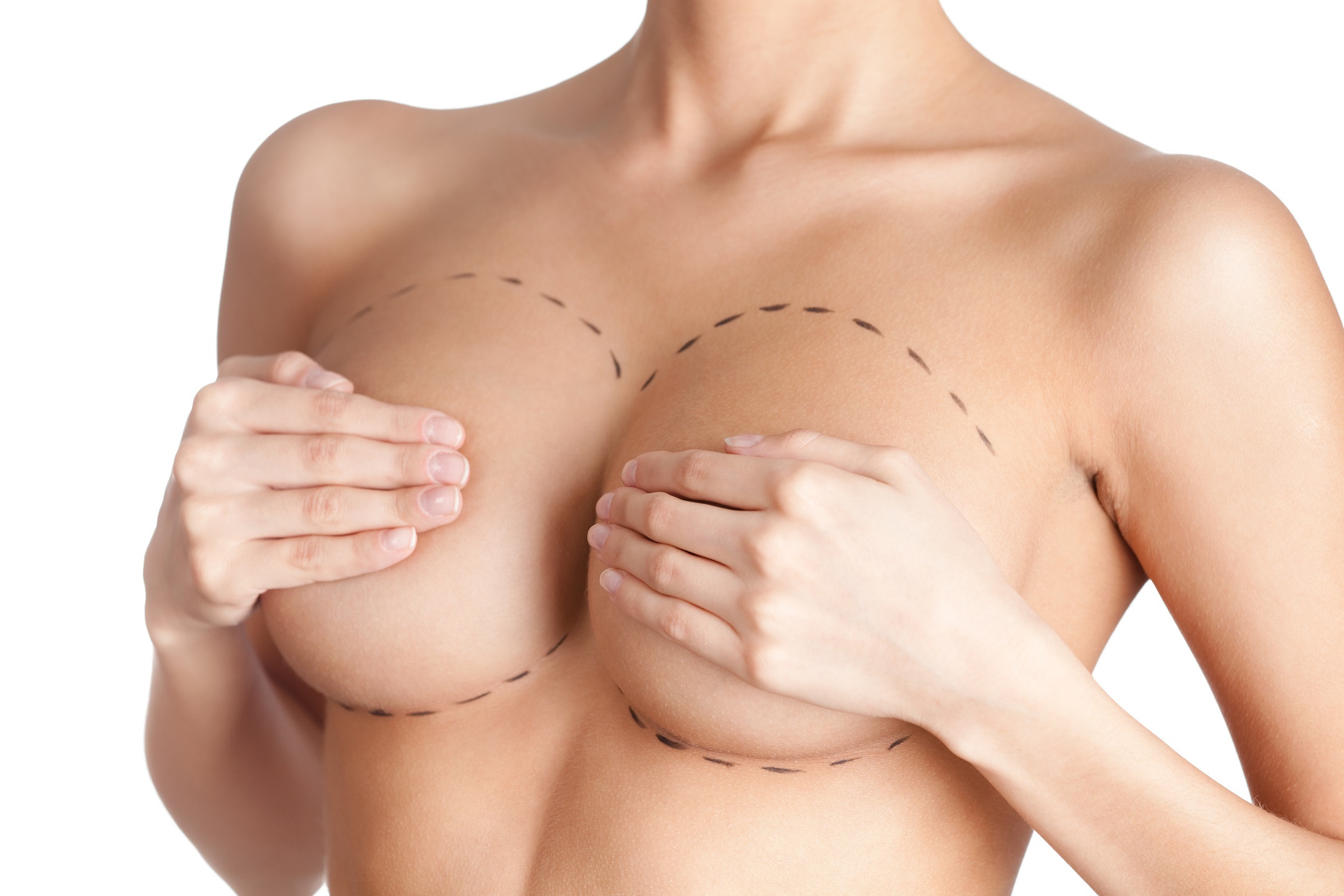Deciding between a breast lift and breast augmentation is a significant choice for those seeking to enhance their physical appearance. While both procedures aim to improve the aesthetics of the breasts, they serve different purposes and yield distinct outcomes. A breast lift primarily addresses sagging and improves the position of the breasts without altering their size, whereas breast augmentation focuses on increasing the size and fullness through implants. This guide aims to clarify these differences, helping individuals make informed decisions based on their personal goals and expectations.
Breast Lift vs Breast Augmentation: Understanding the Difference
Procedure Goals
Breast lift and augmentation are different. A breast lift aims to elevate sagging breasts, giving them a perkier appearance. It does not increase their size.
On the other hand, breast augmentation is about adding volume. This procedure involves inserting implants to make breasts larger.
Surgical Differences
A key difference lies in the surgical approach. Augmentation uses implants made of silicone or saline. These materials add volume to the breasts.
In contrast, a lift involves removing excess skin and tightening tissues. This reshapes and raises the breast without increasing its size.
Making Choices
Choosing between these procedures depends on your goals.
-
If you want firmer, lifted breasts without changing their size, consider a breast lift.
-
For larger breasts, augmentation is your best bet.
Remember:
-
A lift corrects sagging but doesn’t add volume.
-
Augmentation increases size but won’t fix significant drooping alone.
Understanding these differences helps make an informed decision based on what you hope to achieve with surgery.
Insight into the Breast Lift Procedure
Skin Removal
A breast lift targets sagging and uneven breasts. It improves their shape by removing excess skin. This results in a more lifted and youthful appearance.
The procedure tightens the breast tissue, enhancing breast contour and firmness. Patients often feel more confident after surgery.
Incision Types
The type of incision depends on the desired degree of lift. There are several options:
-
Peri-Areolar: Around the areola.
-
Vertical: Down from the areola to the breast fold.
-
Inverted T: Around the areola, vertically down, then horizontally along the breast fold.
Each method suits different needs based on how much lift is required.
Surgery Details
Breast lifts are typically outpatient procedures. They require general anesthesia, ensuring comfort throughout.
Recovery time varies but usually involves rest and limited activity for a few weeks. Patients should follow post-surgery instructions closely for best outcomes.
Understanding Breast Augmentation Procedure
Implant Choices
Breast augmentation involves placing implants inside the breasts. There are two main types: silicone and saline. Silicone implants feel more natural, while saline implants offer adjustable sizes during surgery.
Patients can choose from various implant shapes and sizes. This customization ensures the results align with their personal goals. The choice between silicone or saline, along with the desired shape and size, significantly affects the final look.
Incision Sites
Surgeons can make incisions in different locations based on patient needs and preferences. Common sites include under the breast (inframammary fold), around the nipple (periareolar), or in the underarm area (transaxillary). Each location offers its own advantages.
The inframammary fold is popular for its concealment of scars. The periareolar option blends incisions with the natural border of the areola, making them less noticeable. Transaxillary incisions avoid breast scarring altogether but require more precision.
In comparison to a breast lift procedure discussed earlier, which primarily addresses sagging without increasing size, breast augmentation focuses on enhancing volume and shape through implants. Both procedures have distinct goals but can be combined for comprehensive rejuvenation.
Who Should Consider a Breast Lift or Breast Augmentation?
Ideal Candidates
Women considering cosmetic breast surgery have two main options: breast lift and breast augmentation. Each caters to different needs.
A breast lift is perfect for those experiencing sagging due to aging, weight loss, or childbirth. This procedure restores the breasts’ youthful position without necessarily changing their size. Women noticing their breasts have lost volume or firmness might find this option ideal.
On the other hand, breast augmentation appeals to women desiring larger breasts or looking to correct asymmetry between them. This method involves implants to increase breast size and shape according to one’s preference.
Consultation Importance
Before deciding on a procedure, consulting with a plastic surgeon is crucial. They assess your body type, listen to your goals, and recommend the best approach for you.
During this consultation, be open about what you hope to achieve with the surgery. The surgeon can then provide tailored advice on whether a lift, augmentation, or even both could offer the results you desire.
This personalized approach ensures that each woman receives treatment that aligns with her unique needs and expectations. It’s not just about enhancing appearance but also boosting confidence and comfort in one’s skin.
Preparing for Breast Lift or Breast Augmentation Surgery
Health Considerations
Before undergoing breast lift or breast augmentation, it’s crucial to prioritize your health. Avoiding smoking is essential as it can hinder healing. Certain medications also affect recovery. Your plastic surgeon will advise on which ones to steer clear of.
Patients should discuss their entire medical history with their plastic surgeon. This ensures all potential risks are assessed beforehand. It’s about safety first, always.
Logistics Planning
Arranging logistics is key for a smooth recovery process post-surgery. You’ll need someone to assist you during the initial days after the operation. Also, plan for adequate time off work.
Following your surgeon’s pre-operative instructions is vital for optimal results and minimizing complications like swelling or infection.
During the Breast Surgery Process
Surgery Duration
The time it takes to complete breast surgery varies greatly. It can last from one to several hours. This depends on how complex the procedure is.
For a breast lift, surgeons may need less time compared to augmentation. This is because augmentation might involve placing implants which requires precise adjustments.
Anesthesia Use
During surgery, monitored anesthesia care is essential. It ensures that you are comfortable and safe throughout the process.
Surgeons and anesthesiologists work together closely. They make sure that the right level of anesthesia is administered for your body and procedure type.
Real-Time Adjustments
In breast augmentation, surgeons might use sizers. These help in making real-time adjustments during surgery.
Sizers allow surgeons to see how different sizes look and feel on your chest before deciding on the final implant size. This helps achieve the desired end result with more accuracy regarding fullness and position.
Post-Surgery Recovery at Home
Healing Process
After the surgery, patients can expect a period of recovery. This time is crucial for healing. Patients will experience soreness and swelling. It’s normal but uncomfortable.
To manage pain, doctors prescribe medicines. Always follow their instructions closely. Using a cold pack can also help reduce swelling.
Activity Limitation
Limiting physical activity is essential during recovery. Surgeons provide specific advice on this matter.
For example, avoid heavy lifting or strenuous exercise for several weeks. Such activities can strain your wounds and slow down the healing process.
Support Garments
Wearing a support bra is another key aspect of recovery. Patients should wear it for several weeks after the surgery.
This helps in reducing swelling and supports the breasts as they heal.
Aftercare Instructions
Following aftercare instructions carefully minimizes scarring and complications. Keep the wound area clean to prevent infections.
Attend all follow-up appointments with your surgeon to ensure proper healing.

Potential Risks and Complications of Both Procedures
Infection Risk
After discussing post-surgery recovery at home, it’s crucial to understand the potential risks. Both breast lift and augmentation carry infection risks. Proper care is vital.
Infections can delay healing. They might require additional treatment or medication. Always follow your surgeon’s advice closely.
Scarring Concerns
Scars are a common outcome of these procedures. Their visibility varies based on incision type and individual healing processes.
Breast lifts often result in more noticeable scars than augmentations due to the nature of the incisions required for reshaping. However, skilled surgeons aim to minimize scarring.
Sensation Changes
Changes in nipple or breast sensation can occur after surgery. This could be temporary or permanent.
Most patients experience some level of change initially. Sensation usually returns over time but may not fully recover for everyone.
Implant Issues
Specifically with augmentation, implant-related complications such as rupture or capsular contracture pose concerns.
These issues might necessitate revision surgery or implant removal, adding to costs and recovery time.
Revision Surgery Risk
Both procedures might need future revisions for various reasons including cosmetic dissatisfaction or physical complications.
Understanding this possibility is important during initial consultation discussions about expectations and long-term results.
Choosing a board-certified plastic surgeon significantly reduces these risks. Experience and proper consultation ensure better outcomes and fewer complications.
Board certification indicates a high level of training specifically in plastic surgery techniques, offering reassurance about safety standards being met.
Closing Thoughts
Deciding between a breast lift and breast augmentation hinges on personal goals and physical requirements. Each procedure offers distinct benefits, with breast lifts focusing on repositioning existing tissue for a more youthful appearance, and augmentations enhancing size and fullness. Potential candidates must weigh the differences, recovery expectations, and possible risks to make an informed choice. Consulting with a certified plastic surgeon is crucial to align surgical outcomes with individual aspirations. This decision not only impacts aesthetic appeal but also self-confidence and satisfaction. As you contemplate this significant step, remember the importance of thorough preparation and post-surgery care for optimal results. Engage in open discussions with your healthcare provider to ensure your objectives are met with the highest standards of safety and expertise.
For those considering cosmetic breast surgery, taking action by scheduling a consultation can be the first step towards achieving your desired outcome.
Frequently Asked Questions
What is the main difference between a breast lift and breast augmentation?
A breast lift primarily addresses sagging by repositioning the breasts higher on the chest wall, while augmentation focuses on increasing size and fullness using implants.
Who should consider getting a breast lift or augmentation?
Individuals unhappy with their breast size, shape, or position may consider these procedures. Augmentation suits those seeking larger breasts, whereas a lift benefits those wishing to correct sagging without altering size significantly.
How should one prepare for either a breast lift or augmentation surgery?
Preparation involves consulting with a surgeon to discuss goals and expectations, undergoing pre-operative assessments, quitting smoking if applicable, and arranging for post-surgery support during recovery.
What happens during the breast surgery process?
Both surgeries are performed under general anesthesia. A lift involves removing excess skin and reshaping the tissue. Augmentation requires inserting implants either above or below the chest muscle.
What does recovery from breast surgery typically involve?
Recovery includes rest, avoiding strenuous activities for several weeks, wearing supportive garments as advised by your surgeon, managing pain with prescribed medications, and attending follow-up appointments for monitoring progress.
Can you outline potential risks of both procedures?
Risks include infection, bleeding, scarring issues with implant placement in augmentations such as rupture or displacement), asymmetry between breasts after healing completes; consultation beforehand helps mitigate these risks through careful planning personalized care strategies tailored specifically towards each patient’s needs/preferences/health status etcetera).





